There is one thing that seems quite clear to me, is that one of the best ways to improve our soils, is to have root systems from a diversity of plants, actively growing for as much of the year as possible. Pasture cropping fits the bill here beautifully and has resulted in some truly impressive soil and profitability improvements.
Now if you are a cropper and think, “this isn’t relevant to me”, or you’re a grazier and you’re thinking, “I don’t crop” – do read on, as pasture cropping has such a wide applicability and there are lots of lessons about soil health to be learned.
But first, let’s look at what pasture cropping is….
WHAT IS PASTURE CROPPING?
Pasture cropping is the coming together of cropping and grazing for the symbiotic benefit of both enterprises, economically and environmentally. It is the
‘zero till sowing of annual crops into living perennial pasture’.
Colin Seis, one of the founders of pasture cropping, also refers to it as
Perennial Cover Cropping.
The system relies on no till sowing a crop into the window of dormancy of a pasture.
This could be:
- Sowing winter grain crops into summer active pastures
- Sowing summer grain crops into winter active pastures
- Sowing forage crops in either of the above climates.
- The crop could be a cereal, a broadleaf or a mix species planting.
So, in my area of NSW/Australia near Quirindi, a perennial summer active pasture will cease to grow as we approach and experience the first frosts in April/May. This pasture is crash grazed at this time and a winter growing crop is sown (within the crop’s normal sowing window) into the dormant pasture. The crop is grown through to maturity and then harvested before the summer pasture has had an opportunity to put on much growth after its dormancy.
Prior to grain harvest, the pasture’s growth is hindered by the shading and light competition from the crop. Once the crop is harvested, light is let in to the pasture plants, the competition is removed and the pasture growth blooms.
Crops are planted by direct drilling or no till – there is no working of the soil, nor is there a fallow period. Weed control is helped by competition in the pasture and by ground cover in the crop, which comes from a litter matt on the ground from a pre plant intensive grazing of the pastures. This brings me to a very important companion to pasture cropping – planned, rotational grazing. This is important to ensure the persistence of the pasture.
Paddocks can be ‘pasture cropped’ for more than one year, and although grain yields can be maintained in year 2 or 3 it has been found that ecological response such as perennial grass recruitment tends to slow as more crops are sown in the same paddock over successive years.
So what are the benefits of pasture cropping – both financial and ecological?
WHY PASTURE CROP?
There is a wide and varied array of benefits that come from pasture cropping. I will refer to Colin Seis’ farm as an example for these explanations. Colin is one of the founders of pasture cropping and there have been many studies carried out on his farm “Winona” that have quantified the benefits. Colin farms near Gulgong in NSW, where there is an annual rainfall of 650mm and he has a merino sheep flock.
1. Increased profitability
When practicing pasture cropping, traditional crop yields can be maintained, while also achieving a large reduction in fertiliser use, both in the crop and pasture. Fertiliser use during the pasture only phase is completely eliminated, while crop fertiliser inputs are reduced significantly. Colin recommends reducing fertiliser rates slowly over time to prevent a reduction in grain yield. Grain yields improve as the soil health, soil structure and nutrient cycling improves.
For those coming from a traditional cropping enterprise, herbicide product and application costs over the summer fallow are eliminated. Instead, this summer period becomes productive, as stock graze and produce from the paddock for an extra 6 months of the year. So, reduced costs and extra production is achieved.
For those coming from a straight grazing system, there is extra income from the crop or extra feed if growing a fodder crop. Importantly, there are pasture diversity and quality improvements. With pastures only improving, there is never a need to re-sow worn out pastures, so expensive pasture renovation costs are eliminated (and the lost production in planting these).
Colin Seis reports a 70% drop in his fertiliser input costs with the crop and a complete elimination of pasture fertiliser input costs in the non-crop years. Insecticides and fungicides have been completely eliminated from the system, along with nearly all herbicides. If you are a farmer reading this – you know how much these inputs add up. To not have the risk of the cropping costs upfront in this seemingly more erratic rainfall climate, makes for a good night’s sleep!
NSW Dept Ag budget fertiliser, pesticide and herbicide input costs for short fallowed wheat in the Central West (where Colin is) at $193/ha. NSW Dept Ag also put annual pasture fertiliser costs at $37/ha in a merino sheep breeding enterprise.
Above is one of Colin’s pastures earlier this year, when I was there in May. This paddock is not being pasture cropped this season, but was pasture cropped to oats 2 years ago. Another advantage of the increasing health and resilience of the pastures is that the need to feed livestock in a drought is less likely.
2. Decreased upfront risk
With less upfront input costs for the crop, the financial risk associated with poor crop performance in a dry year is reduced. I would think this is increasingly on people’s minds, as Australia’s rainfall events of recent years have become more erratic.
3. Reduced pesticides
The reduction of herbicides in our environment and in our work places is surely a positive. Recent years have seen a significant increase in herbicide use in traditional cropping systems, with the introduction of double knock strategies, which has also brought a dramatic increase in the use of less safe herbicides (from a user point of view) such as paraquat. Eliminating the summer fallow period will also eliminate the pesticides. I think that surely everyone would agree, (even those with a current reliance on herbicides), if we could remove or reduce pesticides from our food producing systems (and food), it would be a good outcome.
4. Rebuilding of soil nutrients, carbon and microbiology
This is the area where there have been some really amazing outcomes.
The main reasons why I believe pasture cropping works so well at rebuilding soils is the continuous root growth throughout the year. It is the continual growth of these roots that means sugars are released from the actively growing roots, which supports soil microbiology. It is this soil life which facilitates soil structure improvements and soil carbon increases. Traditional cropping systems have a fallow period during which soil microbiology is not supported. Many pastures also have a phase when soil microbiology is not supported; in a dormant phase when there is no active root growth.
As well as the 12 months of active root growth, it is the variety of root systems that support a myriad of different soil microbiology, which are a key to carbon sequestration throughout the soil profile and the availability of a wide range of nutrients.
We just have to look at a summer fallow versus a pastured paddock and it becomes pretty obvious where soil life would be supported. Do we need to set aside the notion of competition between plants, and better understand the synergies when growing together?
Having said this, sometimes it just cannot be avoided. This is a summer growing bluegrass pasture on our place in early February this year. It was just so dry – not much soil life activity here I’m guessing!
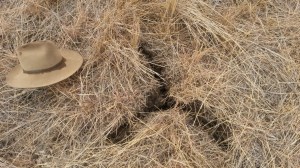
The following results were obtained from a soil food web analysis of Colin’s soil versus his neighbours’ conventionally managed farm directly through the fence. This was done with Dr Christine Jones. The aim of this was to determine if there were any soil improvements from the years of pasture cropping. These were the results for the soil life.
Soil Properties
“Total fungi increase 862%
Total bacteria increase 350%
Total protozoa increase 640%
Total nematode increase over 1000%”1
To give you an idea of what these increases in soil life mean: “Mycorrhizal Fungi supply P, N, trace elements and water in return for root exudates (sugars). The protozoa and nematodes eat bacteria & fungi which supplies N and other nutrients to the plant and free living N fixing bacteria supply Nitrogen” 2.
Other soil tests show that Winona’s soil now has 204% more organic carbon. Not only this, but of this extra carbon, the majority (78%) of the carbon is in the stable humic form, while the remainder is as labile (unstable) C. This is of great significance because the labile C can be readily lost from the soil, but the stable humic form is in the soil to stay for the long run – for decades or more. Not only this, but this increase has been to a depth of half a metre, which is proof of the contribution that root exudates play on carbon levels. If carbon was increasing in just the topsoil, then we could account this to the decaying organic matter on the soil surface, but the increases are throughout the root zone. (More on this concept next week – How does this work? And is it right that we can only build limited stable C by no till farming?).
For those of you that have a handle on carbon tonnages and carbon dioxide quantities, soil tests show that Colin has sequestered 46.7 t/Ha of carbon, which is the equivalent of 172 ton/Ha of CO2. This is an impressive achievement – and especially great, given that Colin knows that a large percentage of this will remain in the soil (as it is stable).
What this extra carbon allows is an extra 200% more water holding capacity of the soil! This is becoming increasingly important, as rainfall events have become more intermittent. What is important then is not only how much rainfall we get, but how much of this can we capture and store. This storage ability is what a lot of soils have lost, and it is becoming increasingly important to get it back!
Tests of soil minerals were taken out by Peter Ampt of Sydney University3 and were compared with traditional management directly through the fence from Colin’s paddock. All of the soil nutrients, including trace elements have increased by an average of 172%. Specifically,
Calcium + 227%
Magnesium + 138%
Potassium +146%
Sulfur + 157%
Zinc +186%
Phosphorus +151%
Iron +122%
Copper +202%
Boron +156%
Cobalt +179
As well as this, pH has risen from 5.3 to 6.3 and sodium and aluminium have dropped.
These above figures relate to TOTAL increases in nutrients, not just available quantities – a quite astounding result. After much head scratching amongst scientists worldwide as to how this could be, it was determined that the large increase in soil microbiology may have resulted in the breakdown of granite parent material present in the soils which has then released the nutrients. Nutrients are also believed to be being brought up from depth, as the root systems have improved with the different management.
The only nutrients being artificially added to the soils of Winona are DAP at around 30-40kg/ha every 4 years (when the crop is sown). Crops used to have around 100kg/ha of DAP applied at planting, while pastures had a long history of 125kg/ha of superphosphate each year prior to the 1980’s.
Biological and organic fertilisers are being trialled and more of these types of fertilisers are being used.
Colin does suggest tracking nutrients with soil tests, as there may be some nutrients that are just inherently missing in certain soils, reflecting a lack of it in the parent material. Selenium is an example of this. So no matter how healthy your pastures and soils become, it is impossible to access more of a nutrient if it just isn’t there.
Pastures
Pasture diversity has dramatically changed in the years that Colin has been pasture cropping. The sowing of the pasture crops actually stimulates the germination of perennial grass species. Colin has 6 x 100m transects across different paddocks on his farm, along which plant monitoring is done each year. This allows him to track the changes in pasture composition. Colin sows ¼ of his farm/pastures to crops each year (mostly oats in the past)– an amount which allows him to maintain his sheep numbers. The data from the transects shows that it is the year following the crop when there are the greatest changes in pasture diversity achieved.
Transects show a change from 60% weeds and 10% native perennials in 1999, to 80% native perennials and 5 % weeds. There are over 50 native pasture species present today, versus just 5 in 1999. Pastures don’t have to be native for pasture cropping however; crops can be sown into improved pastures too.
With lower nitrate N and 100% ground cover, there are less weeds like capeweed, annual ryegrass, mustard weed and thistles (these germinate in areas of readily available nitrate N). Pasture composition is not the only pasture variation. Work by CSIRO has shown ‘increased biomass outside of the cropping season”.2 The work by Peter Ampt reports farm stocking rates in 2010 at 6.2dse/ha/yr across Winona, versus 3.7dse/ha/yr on the neighbouring comparative block.3
Resilience and sustainability of the farm
Similar to many cropping properties in Australia, Colin’s property ‘Winona’ had a long history of cropping, via ploughing and more recently no till with herbicide dominant fallows, as well as high fertiliser use. As already mentioned the pastures had a history of high rates of superphosphate from 1950 to 1979. The long term use of these culminated in the following degradation and production problems:
- Soil acidity
- Compaction
- Carbon loss
- Soil lifelessness, through a lack of microbiology and nutrients
- Worms in sheep
- Red legged earth mites on crops
- Fertiliser not giving the same results
The above problems are a thing of the past under the pasture cropping management, making the farm far more resilient and sustainable. Waterlogging and deep drainage into soils is prevented.
Under the new management regime of pasture cropping and rotational grazing, average crop yields have remained similar at Winona over time, while input costs have been dramatically reduced. The huge reductions in fertiliser and pesticide inputs, as well as the extra grazing over summer, demonstrates clearly the profitability advantages of pasture cropping. Colin now runs more sheep, with no insecticides, no pasture fertiliser, and no pasture re-establishment costs.
Where red legged earth mites were once regularly controlled in early crops, this pest is no longer a problem. Insect numbers have increased 600% with the changed management and have had a 125% increase in diversity. I believe it is both this diversity in species (spiders and beneficials) that is controlling the red legged earth mites, as well as the change in nutrient availability to the crop. The more balanced nutrition approach will mean a healthier, more robust plant which is more naturally resistant (and less attractive) to insect attack.
WHY DOES PASTURE CROPPING WORK?
In a natural system, soil fertility is driven by the soil micro-organisms, which live symbiotically with the plants – the plant supplying carbohydrate/sugar exudates from the roots on which the microorganisms feed and in turn the microorganisms making soil nutrients available to the plants.
When we have a dormant phase to a pasture or we have fallow periods in a cropping system, there is reduced support for the soil micro-organisms due to the lack of root exudates to support them. Pasture cropping means that the soil building microorganisms are working all year round. I believe this is the real key driver that makes this system hum.
To support this, grazing management is equally as important. Grazing pastures, removing livestock before early regrowth can occur and be regrazed, and allowing this regrowth to recover before bringing stock back to the paddock is critical to the pasture’s persistence.
The mix of shallow rooted annual crops and deep rooted perennial pastures aid in the hosting of a variety of soil microbiology.
THE HOW TO’S OF PASTURE CROPPING
Some simple rules for pasture cropping are:
- ‘Never plough or work the country
- Never kill perennial species
- The perennial pastures can be native or introduced (native seems to be better).
- Weeds are controlled by creating large quantities of thick litter (ground cover) by using correct grazing management of livestock.
- Weeds can be controlled with very careful herbicide use.’4
Where to start?
If you are to consider pasture cropping, it is important to identify why you are doing it/what is your priority. Is it:
Fodder – Filling a stock feed gap in a pasture.
Grain yield – maximising grain yield, while looking after the soil.
Flexibility – to be able to crop or graze, but not be tied to one or the other.
Soil improvements – to increase soil carbon & nutrient levels, to cut back fertiliser inputs.
The different priorities may lead to different decisions with regard to fertiliser and herbicide use.
Planting
Pastures are ‘pre-grazed’ or crash grazed at the end of the pasture growing season (pre crop sowing) – this reduces the biomass of the pasture, lets light in to the emerging crop, adds manure and urine to the paddock and mulch on the ground (which helps to prevent annual weed germination). The crop is then no till sown into the dormant pasture. You can see me below in this pasture cropped paddock – and despite the great ground cover, there is not a lot of pasture bulk left in this paddock that has been cropped into. Still, however there is good groundcover to hinder weed germination.
The same no till sowing rules apply as what would be practiced with a crop into fallowed country. That is, attention to sowing times, variety, planting equipment set up etc. Emergence may be a little slower than tilled country, but many growers are well and truly familiar with this from no till sowing, but remember to account for things such as this. Not crash grazing and leaving pastures taller will result in a slower start to a crop and not such a good result.
If you know how to put a crop in successfully under a fallowed system, don’t forget many of the rules still apply.
No fancy machinery is necessary. Whatever no till planter is appropriate for your soil type will be appropriate for pasture cropping – be it tynes or discs. A coulter is most likely necessary in front of the planting row, to cut through grass tussocks or pasture trash.
If planting into soils that are compacted and hard, something like an inverted T tyne may be advantageous to give some soil disturbance around and under where the seed will be placed, enabling the roots system to get going. With degraded, hard soils, the downward pressure of the planter may need to be adjusted right up. As soils improve and soften over time, this will be able to be wound back.
A disc planter will cause less soil disturbance, which has its positives and negatives. The disturbance may result in greater perennial grass recruitment, but also may stimulate more weed germination. Organic growers for instance may opt for a disc planter (in appropriate soils) so as to avoid stimulating the germination of weeds.
With regard to row spacing, Colin reports no yield reduction out to 12”, but a little at 14” (except for in a dry year). The wider row spacing are likely a disadvantage in a fodder crop however. Ideal row spacings are likely to vary with climate.
Consider the growth style of the crop variety you have chosen. Taller varieties may prove more successful come harvest time. Colin used to plant a dwarf variety of oats, but now opts for a taller variety of oats or rye.
What about Fertiliser?
Once soil health increases, crop fertiliser will be able to be cut right back, but initially this may not be the case. When soils are ‘dysfunctional’ or lifeless, going cold turkey on fertiliser and completely cutting it out the first year, whilst expecting to maintain yield, may not be realistic. Traditional fertiliser amounts in the first year’s crop are suggested by Colin, with perhaps a 10-15% cut back each year after that.
The removal of herbicides, and the year round support of soil microbes (from year round root growth), gradually results in the improvement in the microbe systems of the soil, which begin to fire up and make nutrients available. Fertiliser inputs will then be able to be reduced as time goes on. Colin, although not yet, does believe a time will come where he will remove the use of fertiliser all together. Currently however, his input costs have been reduced by around 80%. A massive cost saving! And this saving relates to the crop. There is NO fertilisation of pastures outside of the pasture cropped seasons.
Given that the pasture cropping system is based around re-invigorating soil microbiology, I wonder whether traditional fertiliser quantities could be cut back earlier, and replaced with biology containing inputs that inoculate, support or encourage the soil biology? This biology would, in turn, support nutrient availability. It may be however, that when initially moving from a chemically based system, soils may be so compacted or anaerobic that it is difficult for microbiology to grow and thrive, creating a time lag in results.
Using no fertiliser, the crop may well be slower initially, but is likely caught up by September/October, resulting in no grain yield difference at harvest. I know many phosphorus fertiliser trials in my area on the Liverpool Plains has shown no grain yield advantage in P applications, but have shown a dry matter advantage early/mid-season.
You may view this differently if you are growing stock feed, as the early season growth will give better dry matter, which IS desirable to grazing.
Below is an oats crop at Colin’s farm ‘Winona’, grown with no herbicides, no insecticides, no fungicides and the low rate of 30kg/ha of DAP fertiliser at planting.
What about herbicides?
As stated with Colin’s rules of pasture cropping, herbicides can be applied, but choose carefully. If optimizing grain yield is of most importance, an in crop herbicide for broadleaf weeds is likely an advantage. Colin suggested just concentrating on grass species if trying to chase highest grain crop yields and using an in crop broadleaf selective herbicide.
Past practices have been to use a knockdown glyphosate at planting – once summer grasses have shut down (in the case of a winter crop). This however will select for summer grasses. Avoiding this spray by just using a crash graze can help to support winter pasture species like clovers and native perennial species like wallaby grass and weeping grass.
Selective herbicides for summer weed control may also be used, for things like melons.
CHALLENGES & MISTAKES
As with any system, especially new systems, there are always challenges, so let’s have a look at the known few.
- It will take some time for soils to improve to a level where crop fertiliser inputs can be dramatically reduced. Moving too quickly to no inputs – either herbicidal or fertiliser while soils are still dysfunctional may not prove successful.
- Failing to graze pastures down prior to planting will result in shading and root competition and less success with crop yield.
- In the case of early warm weather in spring (when a winter crop is planted), there may be some challenges with grasses growing up in the crop at harvest time. This will be purely season dependant.
OTHER EXPERIENCES AND APPLICABILITY
There are some amazing results in what Colin Seis has done, but we might expect he can do a good a job given that he is the industry leader. What about other regions and applicabilities? I spoke with grazier and pasture cropper Grant Bain who operates south east of Geraldton in Western Australia in soils that Grant describes best likened to beach sand, with a non-wetting layer on top. Grant says he is predominantly a grazier, but has had cropping in more recent years. The rainfall is around 400mm/yr, of which around 75% falls between May and September.
I love how new techniques are taken on board by farmers and made relevant to their environment. In this case, the intention of the pasture cropping for Grant is to rejuvenate his pastures. The pastures consist of sub-tropical perennial grasses like Gatton Panic and Rhodes as well as Kikuyu. Despite fertilising pastures each year (with an equal blend of DAP and sulfate of ammonia, spread at 50kg/ha) and rotationally grazing, the pastures had lost vigour over time and root systems were ‘shrinking up’ after a life span of around 10 years. While Grant wanted to lock up and ‘rest’ his pastures and not graze them for a period, he couldn’t afford the lost production from resting one or several blocks. The pasture cropping therefore has allowed an income from these paddocks while being rested from grazing.
It is just three seasons that Grant has pasture cropped, but he intends to continue given his experiences so far. The first year barley was sown for cattle feed, but ended being harvested at 1.5t/ha – not an amazing yield for that region, but this crop had virtually no inputs. The second year lupins were sown into the pasture, for (among other things), the nitrogen that they would provide.
They were treated and fertilised like a traditional crop sown into fallow, which was 80kg/ha DAP, with added potassium and sulphur. The lupins yielded 1.5t/ha which was the district average that year.
The next year wheat was planted into the same paddock as the lupins had been in. The wheat yielded 1.5t/ha, behind the district average of 2t/ha. The timing of rains has an impact on how the crop suffers, explained Grant.
The intention of the pasture cropping has been achieved, in that the pastures have bulked up while still providing Grant with an income during this period.
You can see from this photo from Grant’s farm that this block of grasses has quite wide row spacings (42”). This was because at pasture establishment, the grasses were sown alternately with lucerne and atro (spreading legume), and the legume row was not a success. This has however allowed the planting of the pasture crop in between the sub-tropical rows.
While common practice in these soil types is to plant with a tyne, Grant has been planting with a double disc planter, with presswheels and coulter, which prevents the tearing and damaging of the perennial grass crowns that might come with a tyne.
Compared with a conventional cropping situation, with a fallow and little rainfall over summer, pasture cropping has eliminated wind erosion by reducing soil exposure. It is the ability of the crown of the sub-tropical plant to capture soil (sand in this case) and prevent the erosion that also has created some challenges for Grant. The crowns of the plants get so large and high that certain paddocks will be past the point of being able to be cropped into – as the planters just won’t go through the large tussocks. Grant puts this down to the build-up of sand in the plant crown. I quizzed him on whether it was a wind erosion issue around the plant, but he puts it down to the movement of the sand from the cattle hooves – kicking it around (over time), where it is caught up in the crown of the plant. Grant has noticed this is worst near water points, which is evidence of the influence of the cattle tracking. This is not likely a problem in non-sand soil types.
To get around this problem, Grant’s plans for the future are to change to a different pasture base – to a monoculture perhaps using alto (spreading legume). He has also considered pushing the pasture rows out to 1metre and interrow planting with a tyned implement.
You may have some suggestions for Grant as to what might work for his environment.
At this stage Grant hasn’t noticed any physical soil differences. There are some promising soil test results indicating some mineral levels are increasing.
Prior to planting, Grant grazes his perennial sub-tropical grasses right down, and then also applies around 1.5L/ha of glyphosate for weed control – weeds like wild radish, ryegrass, brome grass and Patterson’s curse. This most recent year he even applied a 1.5L/ha application of glyphosate, which was followed by a 1L/ha application of sprayseed, with the pasture surviving finely.
You can see below Grant’s emerging wheat in a Panic pasture after an application of the above mentioned double knock. There are already signs of the pasture grasses coming back.
While Grant’s adaptation of pasture cropping is not as self-sustaining or regenerative as Colin’s – with the herbicide use mentioned above and still constant use of fertiliser. Grant has however taken the pasture cropping idea and adapted it to suit his system. He isn’t necessarily following the ‘rules’ set out by Colin, but this may be as good as one can expect in what is a very different soil type and environment than the central west of NSW.
I wonder what would happen if Grant were to not spray at planting time, but were to leave the ryegrass, radish etc, and plant through these in order to have more root systems growing in the soil? In our environment we would eventually get a succession of plants from the lower weed species to higher order plants. Grant did explain to me however those native perennial grasses are virtually non-existent in his region, so what plants are there for the pasture to move to through succession? The native things to the area are shrub like, low bushes of 1m high and grasstrees or blackboys.
We should also consider that given the soil’s microbiology is making the pasture system work in other environments – how much capacity do these sand soils have to support much soil fungi and microbiology? I might also discuss this next week.
Such differing applications may inspire you to think about how you could adapt pasture cropping to suit your environment and soil types.
Upon harvest at Grant’s, the sub-tropical grasses already have some growth on them and Grant had previously expected contamination and staining problems on the grain from this – especially given that what comes out the back of the header looks like lawn mower clippings. No such problems have arisen however.
Personal experience
Here are some photos of some pasture cropping we did at home on our farm on the Liverpool Plains of NSW. It was oats sown into a summer subtropical pasture that was a relatively new stand and had not had a great establishment of the pasture species. The oats provided feed through winter and also provided ground cover in a pasture that was not well established. We kept the pasture, which (with correct grazing management) filled in to be a good stand. Here is another application for pasture cropping. It protects the soil, whilst waiting for a pasture to ‘fill in’. You can see the hayed off/frosted summer grasses in the below photo and the poor pasture establishment.
Knowing what I know now, the below block could possibly have had a harder graze prior to sowing the crop. You will note a few summer grasses still growing amongst the oats (below) – plains grass and danthonia or wallaby grass. Perhaps choosing a species (grazing wheat) or variety with a later sowing window would help to prevent this competition from late growing summer grasses.
From memory we put a small amount of DAP with the seed when this was sown. Unfortunately I don’t have any later season photos. We grazed the oats off and utilised the feed for our cattle. There was never any intention to grow this crop for seed harvest. At the time we were filling a feed gap (and giving it a go with some spare seed from the shed). But this is not the only point of pasture cropping. It is the season after pasture cropping that Colin says he gets the greatest increase in diversity of pasture grasses and this was something we didn’t monitor. I have a much greater appreciation now for the soil building potentials from pasture cropping and we would like to do some more.
There are also growers in Victoria, where their pastures are winter/spring dominant, who a planting summer crops into their pastures. They are sowing things like cowpeas. Just another successful application of pasture cropping.
WHAT NEXT?
Colin has been playing with multi species plantings in the most recent years and would like to further test different mixes. When I visited the farm this year he had some fodder crops of forage brassica oats, and field peas with some plantain thrown in as well.
This may well be a great option for us here at home, as we have a few pastures that are fairly dominant with just a few sub-tropical grass species. The diversity of a range of root systems from a multi species crop I’m sure would be great. We already practice the rotational grazing, so it would make an easy fit as winter fodder.
Colin tells me he is currently writing a book about Pasture Cropping and how it all came to be, so keep an eye out for this.
And finally, how about this for a great idea! Colin told me of his latest idea, to pasture crop vegetables into the dormant pasture – Wow – I love this idea! What healthy produce we could have when growing in a soil of mixed species, with a fuller suite of nutrients. Now there’s a stem of broccoli I’d like to eat! This idea is obviously not for the average broadacre cropper or grazier – but certainly something to think about for some.
Farmers in Australia and around the world who practice on lighter soils are having the realisation that things can’t go on as they have….. they are being forced to change through necessity. I believe this is still coming for some more fertile areas of the world, but Colins says “We need agriculture to be ecologically based – and this needs to happen all over the world” and I agree.
Thanks to Colin and Grant for sharing with our Conscious Farmer community.
How could pasture cropping work on your farm or in your region?
What would be your objectives in doing it?
Have you already had some experience? Please share with us.
You may even have some suggestions for Grant – a pasture alternative or something to help overcome the challenges of planting through his sub-tropical grasses.
IF YOU WOULD LIKE TO RECEIVE ONGOING IDEAS FOR YOUR FARM, with links emailed to you weekly – SUBSCRIBE HERE.
If you’ve enjoyed this post, you can share this page with a friend and help spread the word of regenerative agriculture. Next week’s post will be just available to subscribers.
References
- Colin Seis, Stipa Conference presentation.
- Bruce, S.E. et al. Pasture Cropping: effect on biomass, total cover, soil water & nitrogen. 17/6/2014. http://www.pasturecropping.com/index.php?option=com_content&view=article&id=50:pasture-cropping-effect-on-biomass-total-cover-soil-water-a-nitrogen&catid=40:research-findings&Itemid=63 CSIRO, Canberra
- Ampt, P & Doornbos, S. (2010) Communities in Landscapes project Benchmark Study of Innovators. Sydney University.
- Seis, C. Pasture Cropping Principles www.pasturecropping.com accessed June 2014.

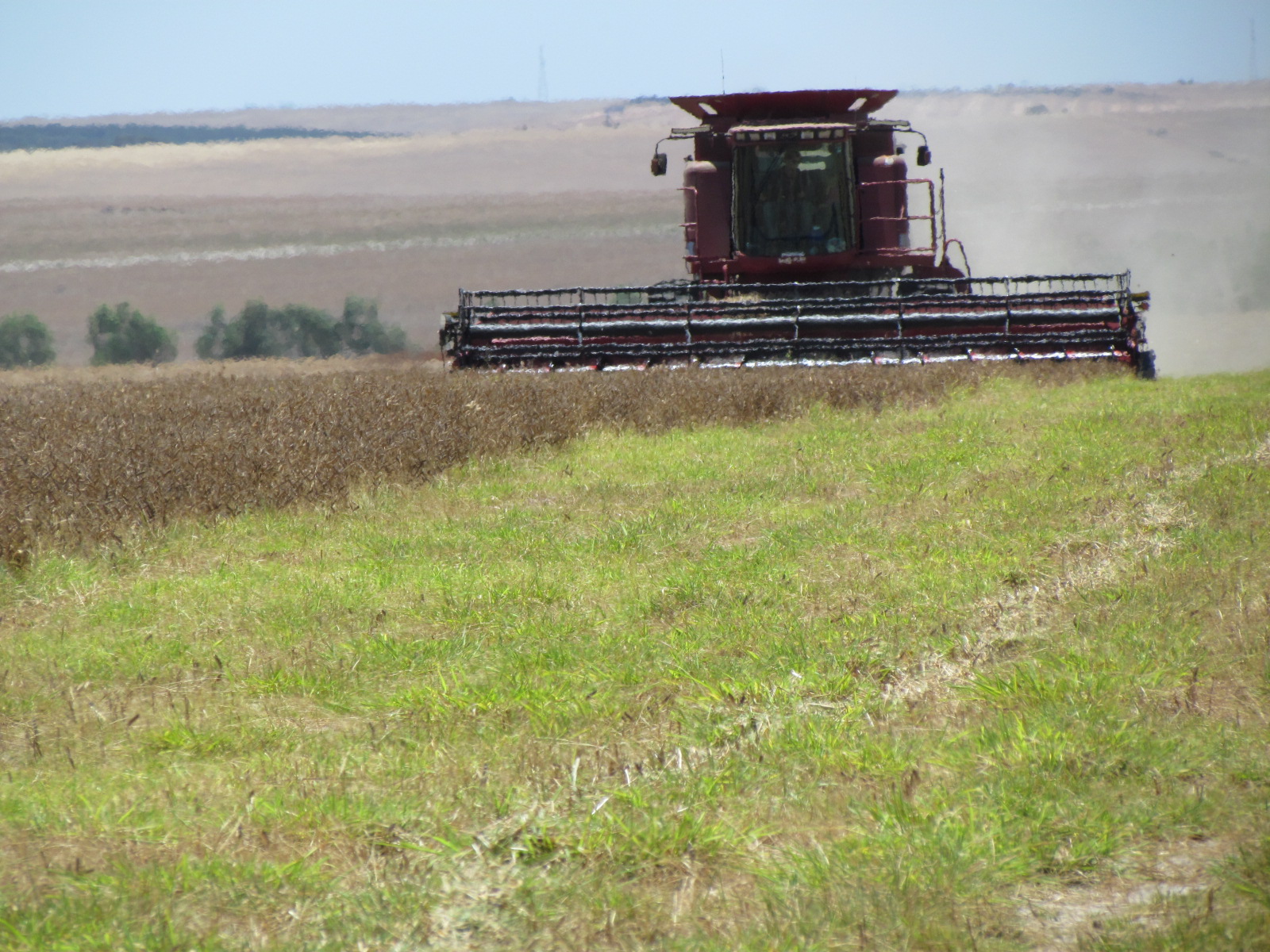
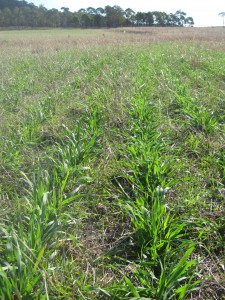
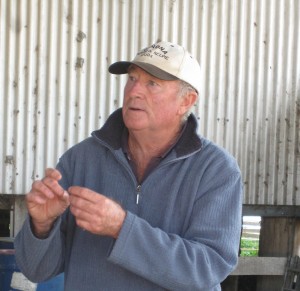
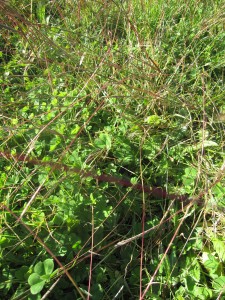
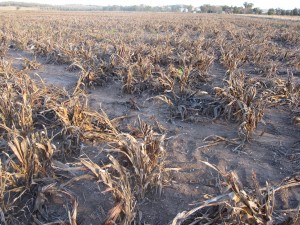
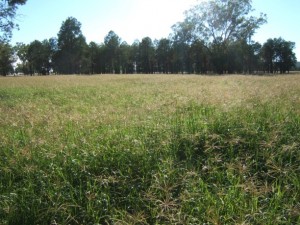
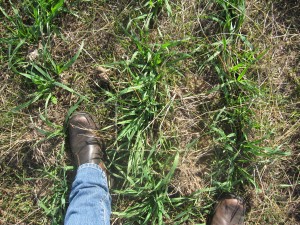
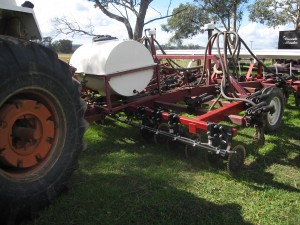
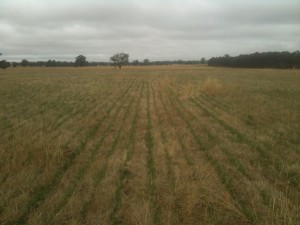
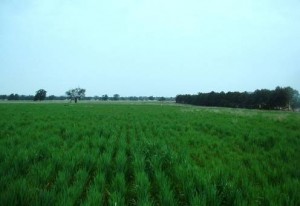
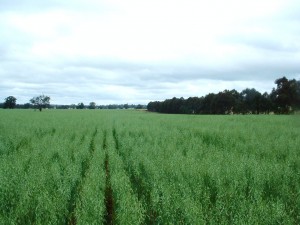
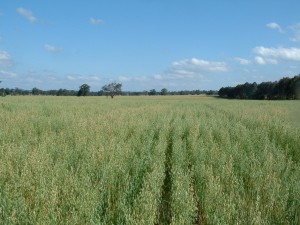
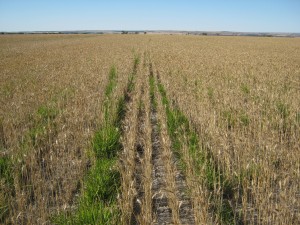
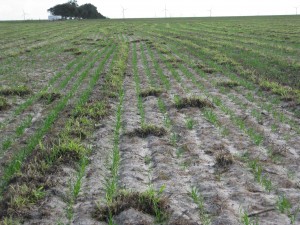
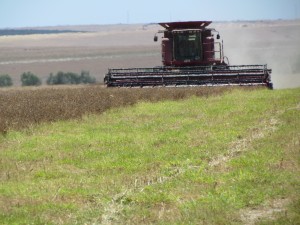
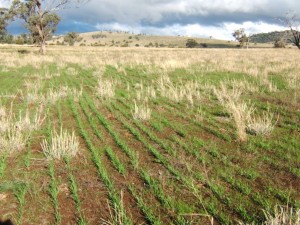
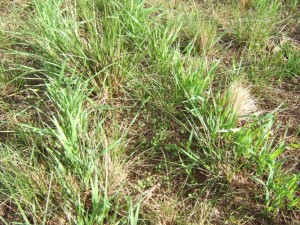
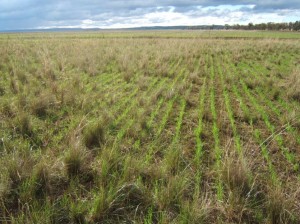
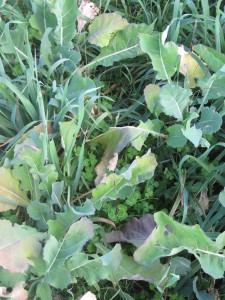
Fantastic information. Thank you.
The benefits of filling that feed gap for grazing during the dormant season are exciting enough alone, but like Kirrily had mentioned, we had underestimated the ongoing benefits to the existing perennial pasture.
I am really looking forward to giving this a more thorough go with a diverse mix of cereals, plantain and annual legumes into some native and introduced sub-tropical pastures here in northern NSW.
Thanks Colin and Grant for sharing your ideas and experiences with this.
Congratulations on getting this blog up and going Kirrily, I know you have been really excited to create change in agriculture around the world, one blog at a time.